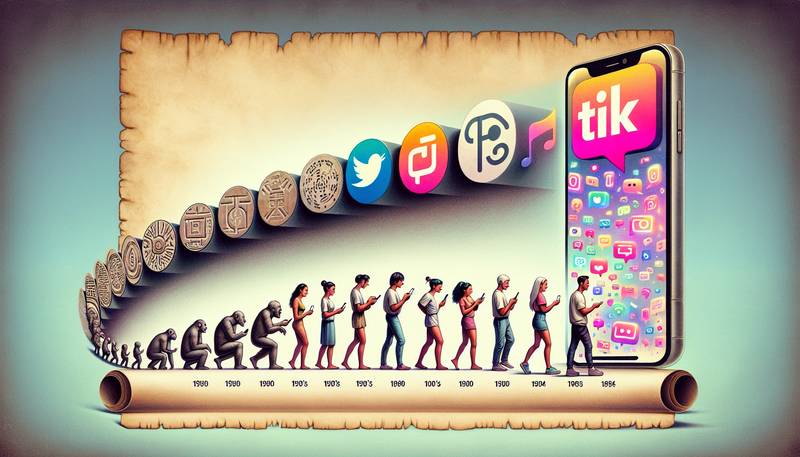The Evolution of Social Networks: From Forums to TikTok

Social networks have come a long way since their inception. From the early days of forums and chat rooms to the current landscape of TikTok and Instagram, the evolution of social media has been nothing short of revolutionary. In this article, we'll take a look at the history of social networks, how they've evolved over time, and what the future may hold for this ever-changing landscape.
The Early Days of Social Networking
The concept of social networking dates back to the early days of the internet. In the 1980s, Usenet, a collection of newsgroups, allowed users to post and read messages on various topics. This was followed by the emergence of online bulletin board systems (BBS) in the 1990s, which allowed users to connect with others through dial-up modems.
Forums and chat rooms were the next evolution of social networks, allowing users to interact with others in real-time. Sites like AOL and Yahoo! Chat were popular among early internet users, providing a space for people to connect with others who shared similar interests.
The Rise of Social Media
With the arrival of the new millennium, social networking took a massive leap forward with the launch of sites like Friendster, MySpace, and LinkedIn. These platforms allowed users to create personal profiles, connect with friends, and share content.
Facebook, launched in 2004, quickly became the dominant player in the social media space. Its user-friendly interface and wide array of features, including photo sharing, events, and groups, made it a favorite among users.
Twitter, launched in 2006, introduced the concept of microblogging, allowing users to share short, 140-character updates with their followers. This platform quickly became popular among celebrities, politicians, and other public figures, giving them a way to connect with their fans and share their thoughts in real-time.
The Rise of Visual Social Networks
As smartphone usage skyrocketed in the 2010s, visual social networks like Instagram and Snapchat gained popularity. These platforms focused on photo and video sharing, allowing users to capture and share moments from their lives with their followers.
Instagram, in particular, became a favorite among influencers and brands, who used the platform to share visually appealing content and engage with their audience. Snapchat, with its ephemeral messaging and quirky filters, became a hit among younger users.
The Emergence of Video Social Networks
Video has become an increasingly important part of the social media landscape. YouTube, launched in 2005, has become the go-to platform for video content, with creators and brands using the platform to share everything from how-to videos to vlogs.
TikTok, launched in 2016, has taken the world by storm with its short-form video content. The platform's unique algorithm and editing tools have made it a favorite among Gen Z users, who have used it to create viral dance challenges, skits, and other creative content.
The Future of Social Networks
As technology continues to evolve, so too will social networks. With the rise of virtual and augmented reality, we may see social networks that allow us to interact with others in entirely new ways. The metaverse, a virtual space where users can interact with each other in a 3D environment, is also on the horizon, with companies like Facebook (now Meta) investing heavily in its development.
Privacy concerns will also continue to shape the future of social media. With users becoming more conscious of their digital footprint, social networks will need to adapt to provide more control over personal data and ensure a safer online experience.
Conclusion
The evolution of social networks has been a fascinating journey. From the early days of forums and chat rooms to the current landscape of TikTok and Instagram, social media has transformed the way we connect with others and share our lives. As technology continues to advance, we can expect to see even more exciting developments in the world of social networking. One thing is for sure: social media is here to stay, and it will continue to shape our world in ways we can't yet imagine.


